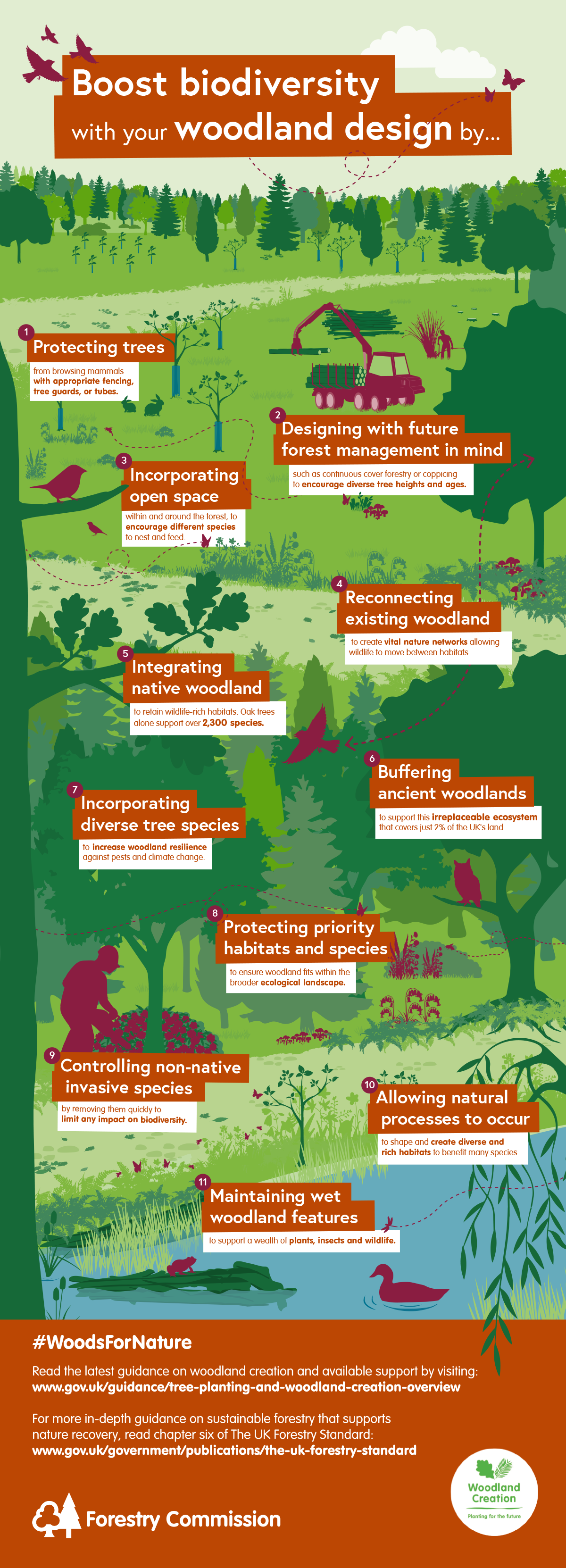
https://forestrycommission.blog.gov.uk/2022/10/28/boost-biodiversity-with-your-woodland-design/
Boost biodiversity with your woodland design
Posted by:
Asia Aldridge, Posted on:
-
Categories:
Nature, Tree planting, Woodland creation, Woodland management



5 comments
Comment by Derek Utley posted on
Plant bush-like species which give colour at a low level to complement the canopy.
Such as dogwood, guelder rose, euonymous. Any other suggestions?
Comment by Hugh Dorrington posted on
An understorey is vitally important in a woodland designed with wildlife in mind, but guelder rose and spindle are light loving plants that will die out as the canopy develops. I would plant shade bearing trees such as hazel, wych elm, woodland hawthorn (Crataegus laevigata), yew, field maple and hornbeam. The last two may need to be periodically pollarded to stop them muscling their way into the canopy.
Comment by Hugh Dorrington posted on
When planting a mixed woodland, plant the different species as an intimate mixture - no single species blocks or lines. This allows natural selection to shape the species composition of the woodland as it grows. Such a wood is naturally resilient. It can adapt to the threats of pests, diseases and climate change as they arise.
Comment by Derek Utley posted on
Thanks, Hugh. The first comments are very useful, the second I have always followed.
What do you think about density? I usually plant at 2m between stems, allowing for some failures and if not, natural selection.
Comment by Hugh Dorrington posted on
I generally plant new broadleaved woods at 2.5 or 3m spacing. Partly for economy, but also to allow a wide range of species to survive the early years of establishment. Once the canopy closes, natural selection can play its part, alongside management to maintain species diversity and increase habitat diversity.